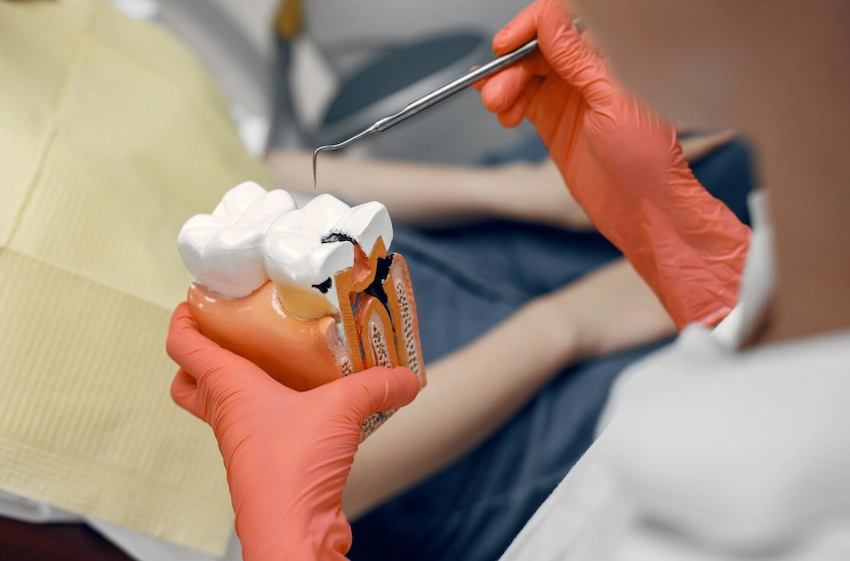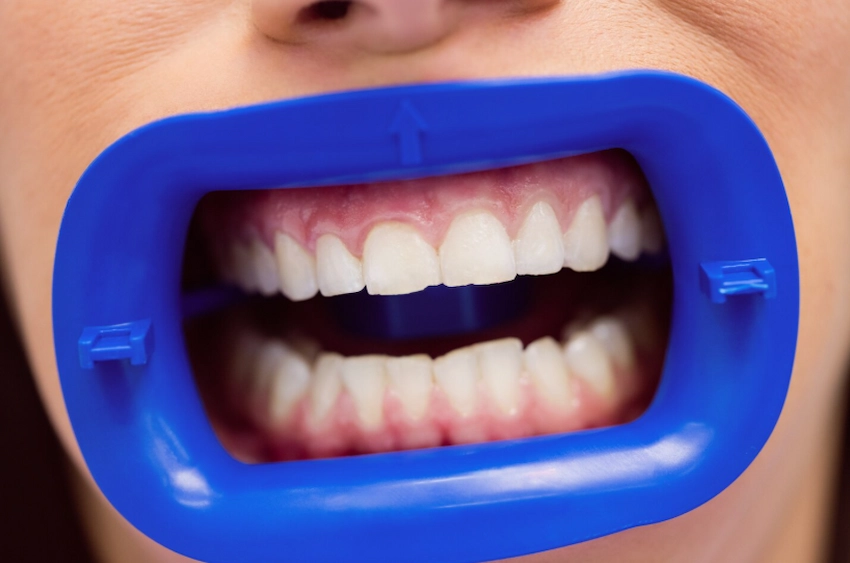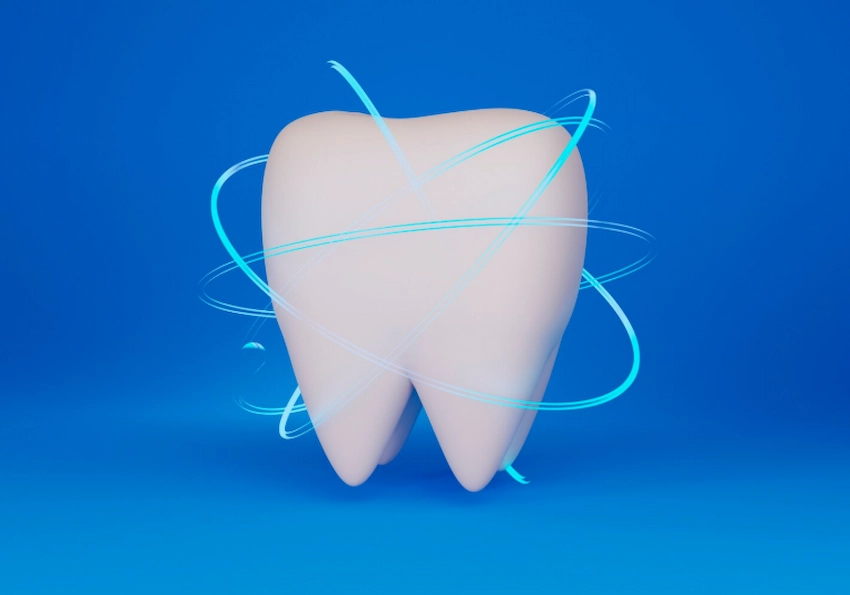🦷 Tooth Remineralization: What Is It and How Is It Done?
If your teeth were superheroes who, despite their small size, are constantly fighting a war against acids, sugars, and bacteria—reminder: they don’t lose the battle, but at a slow pace. Now, suppose the superheroes are gradually losing their armor—this is exactly how it feels with your enamel when it loses minerals. The bad news? It can make your teeth sensitive, weak, and, to be honest, less Instagram-worthy. The good news? Tooth remineralization is like outfitting them with their armor again, giving them the power to fight off decay and be bright again.
On the other hand, there is a point that is often overlooked by many people, even if the enamel of the teeth is strengthened as a result of the remineralization, it does not indicate that the teeth will be perfect. Still, the natural teeth can have uneven shapes, staining so deep it’s hard to see the tooth, or even chips, that aren’t going to be replaced by some kind of magic. That is why patients at Lema Dental Clinic in Istanbul, Turkey, often resort to veneers, implants, and the Hollywood Smile as a complement to remineralization because strength plus beauty is the ultimate combo.
Key Points in Tooth Remineralization

Tooth remineralization is a complete healing of a damaged enamel in its first stages without the need to cut the tooth for a cavity to be formed. These are the facts:
- The process is natural – By your body, if the necessary conditions are provided, lost minerals like calcium and phosphate will be restored.
- Fluoride has a significant role – It is the stick that helps the minerals to bond again with your enamel.
- It’s a race against time – If you start the process, the sooner the better, your enamel will be saved.
In Lema Dental Clinic, remineralization is not just a “quick fix” solution. It is part of a comprehensive dental plan that mixes preventive and aesthetic treatment. The reason? Because the case of a tooth being clinically healthy and still looking unharmonious, smaller, or stained is quite possible. Then comes cosmetic dentistry to complete the change with your help.
Signs That Your Teeth Need Remineralization

Your teeth won’t email you directly if they lose minerals; however, they’ll provide you with some subtle hints that something is out of place:
- Spots and patches of white color give a chalky look to the teeth (in most cases, they are the first signs of enamel loss).
- More than usual sensitivity in the mouth when experiencing hot, cold, or sweet foods.
- Tooth-related issues, such as roughness or unevenness in the dental surface, which is new to you.
- Lack of brightness or shimmer, which gives your smile a gloomy look.
- Edges that have gone thinner and almost look like they are transparent.
Once you have recognized any of these, it means that you have to go for a checkup. Moreover, if remineralization is still capable of damage prevention, it cannot be enough to bring back your teeth’s original beauty, especially if there are some discoloration and shape issues. The time comes when veneers, crowns, or implants from Lema Dental Clinic are your next stop.
Natural Tooth Remineralizers: What Do They Do?

Nature has provided you with tools to take care of your teeth if you only knew how to use them.
- Saliva: the body’s internal defense unit that is perpetually rinsing teeth and providing minerals.
- Fluoride: In toothpaste, some water supplies, and professional treatments, it is a component that builds the enamel and stops the process of demineralization.
- Calcium-rich foods: Cheese, milk, and yogurt not only provide calcium but also the other minerals that have been stripped from the teeth.
- Phosphate-rich foods: Fish, nuts, and seeds are some foods that can be consumed in order to bring the enamel to its natural, reparable state.
- Magnesium: This mineral, found in dark vegetables and whole grains, is the one that starts the process of calcium absorption.
Here’s the rub? Natural remineralization is a slow process, and in some instances, it is not sufficient to alleviate deep stains, chips, or severe enamel wear. Thus, many individuals at Lema Dental Clinic decide on a combination therapy—healthy enamel internally and veneers or a Hollywood Smile externally.
What Causes Teeth to Lose Minerals?

The enamel on your teeth is strong; however, it is not without flaws. Demineralization – the loss of minerals – may occur as a result of:
- Acidic foods and drinks, such as carbonated drinks, citrus juices, and sports drinks.
- An overload of sugar that provides bacteria with the necessary energy for the production of acids that erode enamel.
- Poor oral hygiene allows plaque to be on the teeth for too long.
- Dry mouth lowers the amount of saliva, which is needed for natural remineralization.
- Acid reflux that makes stomach acids come in contact with the teeth.
- Brushing excessively with hard bristles can physically result in the removal of the enamel.
Enamel, once lost to minerals, cannot be regenerated like bones, but it can still be remineralized for strength. And in the case of a compromised look, cosmetic dentistry can not only give back your smile’s strength but also its beauty.
5 Tips to Remineralize Your Teeth
- Brush with a fluoride toothpaste twice daily- That’s your most potent weapon against the wearing down of your enamel.
- Eat smart between meals- Pick foods that have a low sugar content and are rich in minerals, e.g., almonds or cheese.
- Get lots of water to drink- This will keep your mouth moist and will also increase saliva production.
- Minimize the intake of acidic drinks- In case you are not allowed to give them up, use a straw and rinse your mouth with water afterwards.
- Go to your dentist often- Here at Lema Dental Clinic, not only can we monitor your enamel health, but we can also recommend customized treatments that will make your teeth stay strong and attractive.
Why Remineralization May Often Fall Short
- On top of that, even if remineralization is effective in regaining the vitality of your teeth, they can still have the following:
- Persistent staining that whitening treatments are unable to eradicate.
- Uneven contours that disrupt the balance of your face.
- Small fractures or spaces that you want to cover.
This is the point where dental veneers, crowns, and implants come in. At Lema Dental Clinic, the dentists not only use the methods for the protection of the enamel but also consider the aesthetic aspects, thus giving you not only healthy teeth but also a smile that can be found on the front pages of magazines.
FAQ: Tooth Remineralization: What Is It and How Is It Done?
The process of enamel remineralization is to recover the minerals that were lost in enamel so that the teeth become more resistant and stronger against decay.
Teeth can be remineralized naturally one relying on the saliva production and on a diet rich in minerals and fluorine, and a dental professional can also use fluoride treatments and some products for the teeth.
First of all, take care of your mouth and teeth properly. Limit the consumption of acidic foods and use fluoride toothpaste every day.
Remineralization is a process of adding back the lost minerals into the enamel; demineralization is the loss of those minerals due to acids or bacteria.
The answer is yes, in the beginning phases of a cavity—if the damage is too much, then a restoration like veneer may be needed to recover both the function and the aesthetics of the tooth.




